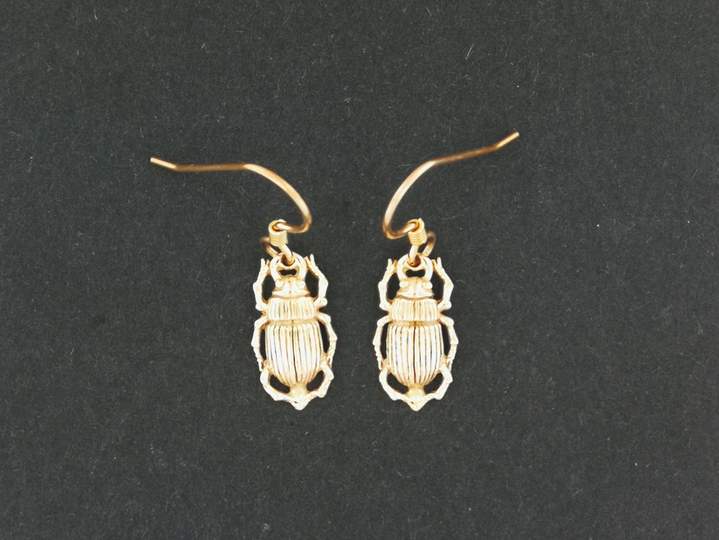
Materials Mondays: The Bronze Age!
What is Antique Bronze?
Well, there isn't a direct answer to that question without knowing anything about Bronze. Let's start there!
Bronze:
Bronze is an alloy consisting of 88% primarily copper and commonly paired with about 12-12.5% tin (This is often combined with the addition of other metals like aluminum, nickel or zinc) Occasionally you may see other non metals like arsenic, phosphorus or silicon. These additions produce alloys that are harder than copper alone or provide strength, machinability & ductility.
Bronze enabled people to create metal objects that were harder and more durable than ever before. Initially, bronze was composed of copper and arsenic.
The earliest artifacts so far known came from the Iranian Plateau in the 5th Millenium BC
Later, tin was used becoming the major non copper ingredient of bronze in the late 3rd Millennium BC
Tin bronze proved more superior to arsenic due to the easier control during the alloy process and the resulting alloy being stronger & easier to cast. Unlinke arsenic, metallic tin and fumes from refining aren't toxic.
The earliest tin alloy bronze dates to 4500 BC while other early examples date to the late 4th millennium BC in Egypt, Iran, Iraq and some ancient sites in China.
The archeological period in which bronze was the hardest metal in widespread use is known as the 'Bronze Age' The beginning of the Bronze Age in India & Western Eurasia is dated to mid 4th Millennium BC and early 2nd Millennium BC in China.
The Bronze Age:
In the Bronze Age two forms of bronze were commonly used; 'classic bronze' where about 10% tin was used in casting; and 'mild bronze' where you'd see about 6% tin.
Classic bronze was found in bladed weapons while helmets and armor were hammered from mild bronze.
The list of other uses for bronze is extensive! A few highlights were sculptures and statues. Bronze statues were regarded as the highest form of sculpture in Ancient Greek Art.
More common uses were coins, medals, musical instruments (bells, cymbals, singing bowls, guitar & piano strings), mirrors and tools.
This Classic Bronze is known today as Antique Bronze, Ancient Bronze or True Bronze and it's what I use in my jewellery creations. As noted above, this alloy consists of primarily copper at 90% and 10% tin. Unlike regular bronze, it does not contain zinc. The colour has rich red undertones that slowly develop a patina over time.
There are specific ways to care for your bronze jewellery that can keep that patina at bay for awhile longer.
Caring for your Bronze Jewellery: Tips tricks and homemade cleaners!
- Storing your bronze jewellery in an airtight plastic bag will reduce its exposure to oxygen.
That's right... suffocate it! Oxygen, though essential to us humans is not so great for bronze. Oxidation is what causes that patina over time. - Apply moisturizer, sunscreen, makeup and other skincare products BEFORE putting on your bronze jewellery
- Rub bronze jewellery with a soft cloth after each wear to remove body oils.
- Never wear your bronze in a swimming pool! Chlorine wears at the metal.
To clean your jewellery, you can make your own bronze, brass & copper cleaner.
Green Cleaning in Oregon Metro gave this little piece on home remedies:
Bronze, brass and copper cleaner
Make your own non-toxic bronze, brass and copper cleaners at home with these simple recipes and tips.
Option 1:
Natural acids such as vinegar and lemon juice can be used to clean or polish brass and copper.
Option 2:
Step 1: Mix 2/3 cup vinegar and 2/3 cup flour in a glass bowl.
Step 2: Add 1/2 cup salt and stir.
Step 3: Spread on tarnished metal. Wait 1 to 2 hours.
Step 4: Rinse, dry and polish with a soft cloth and a dab of olive oil.
Option 3:
Combine:
3 teaspoons salt
1 tablespoon flour
enough white distilled vinegar to make a paste
Scoop the paste onto a clean sponge and polish clean. Rinse with hot water and buff dry with a soft cloth.
Option 4: Soak overnight in a solution of half white distilled vinegar, and half water. Rinse with hot water and wipe dry with a soft cloth.
Option 5: Cover item with catsup. Let stand for a few minutes, then rinse thoroughly and dry.
Prevent tarnished brass: Rub with a cloth moistened with olive oil after polishing.
Remove lacquer: Submerge in boiling water with a few teaspoons each of baking soda and washing soda. Wear gloves. (Never use baking soda on aluminum, as it will pit the surface.)
Remove rust: Wet a sheet of aluminum foil with water. Rub just the rust with the wet foil. (Foil will scratch chrome.)
There you have it folks, your history lesson on Bronze, different types and uses for this alloy and a how to care for and clean your precious wares.
Join me for the next Materials Monday where we look at all things GOLD!!
